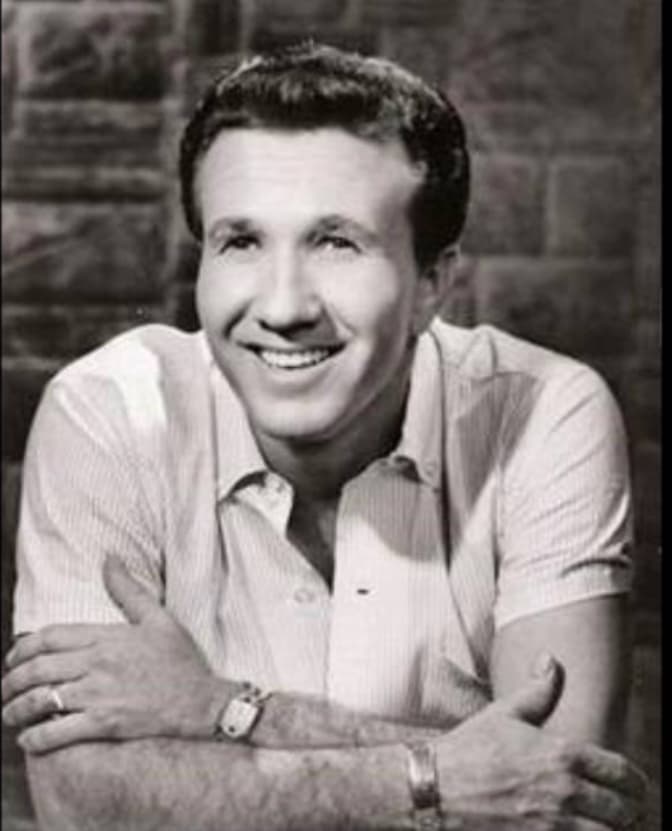
A Ballad of Courage and Inevitable Fate in the Old West
Big Iron, sung with that unmistakable resonant baritone by the legendary Marty Robbins, wasn’t just a song; it was a cinematic experience for the ears. Released in the autumn of 1959 on the album Gunfighter Ballads and Trail Songs, this captivating narrative quickly climbed the charts, peaking at number 26 on the Billboard Top 100. In a musical landscape often dominated by rock and roll’s youthful exuberance, Marty Robbins carved a distinct niche with his storytelling through song, and Big Iron remains one of his most enduring and beloved creations.
The genesis of Big Iron lies in the evocative pen of Marty Robbins himself. Inspired by the romanticized and often perilous tales of the American West, Robbins crafted a compelling narrative centered around a fateful encounter in the dusty town of Agua Fria. The song paints a vivid picture of a lone Arizona Ranger, armed with the legendary “big iron on his hip,” facing down a notorious outlaw known as Texas Red. This wasn’t just a simple tale of good versus evil; it delved into the tension, the anticipation, and the almost mythical aura surrounding these figures of the frontier.
At its heart, Big Iron is a ballad about courage, reputation, and the swift, often unforgiving, hand of fate. The Ranger, though perhaps an unknown quantity to Texas Red, carries the weight of his duty and the implied skill that comes with his profession. Texas Red, on the other hand, is established as a fearsome figure, a man who had “twenty men dead” to his name. The brilliance of the song lies in its build-up to the inevitable confrontation. The days spent waiting, the nervous anticipation in the town, all contribute to the dramatic tension that culminates in the blink-of-an-eye gunfight.
The lyrics are rich with imagery, transporting the listener to a sun-baked Western street. We can almost feel the dust under our boots, hear the creak of leather, and sense the palpable tension as the two men face each other. The focus on the Ranger’s “big iron” – likely a powerful single-action revolver of the era – becomes a symbol of his authority and his readiness. It’s more than just a weapon; it’s an extension of his persona, a testament to the dangerous life he leads.
Beyond the immediate narrative, Big Iron touches upon themes that resonate even today. It speaks to the idea of facing one’s fears, of standing up for what is right, even in the face of overwhelming odds. The Ranger, despite the fearsome reputation of Texas Red, doesn’t back down. He confronts the danger head-on, embodying a certain stoicism and resolve that many found admirable.
The song’s enduring popularity is a testament to Marty Robbins’ masterful storytelling and his ability to evoke a specific time and place with such clarity and emotion. His deep, steady voice lends a gravitas to the narrative, making us believe in the characters and the stakes of their encounter. The simple yet effective instrumentation, often featuring a distinctive guitar riff that has become instantly recognizable, further enhances the song’s atmosphere.
For those of us who remember the era when Westerns dominated television and movie screens, Big Iron strikes a particularly nostalgic chord. It conjures images of cowboys, dusty trails, and the romanticized ideals of the frontier. It reminds us of a time when storytelling through song was a powerful form of entertainment and a way to connect with shared cultural narratives.
Big Iron isn’t just a song; it’s a miniature Western film captured in verse and melody. It’s a reminder of the courage it takes to face down danger, the swiftness with which fate can intervene, and the enduring power of a well-told story. So, let the familiar guitar intro wash over you, and let Marty Robbins once again transport you to the dusty streets of Agua Fria, where the legend of the Ranger and his Big Iron continues to live on.